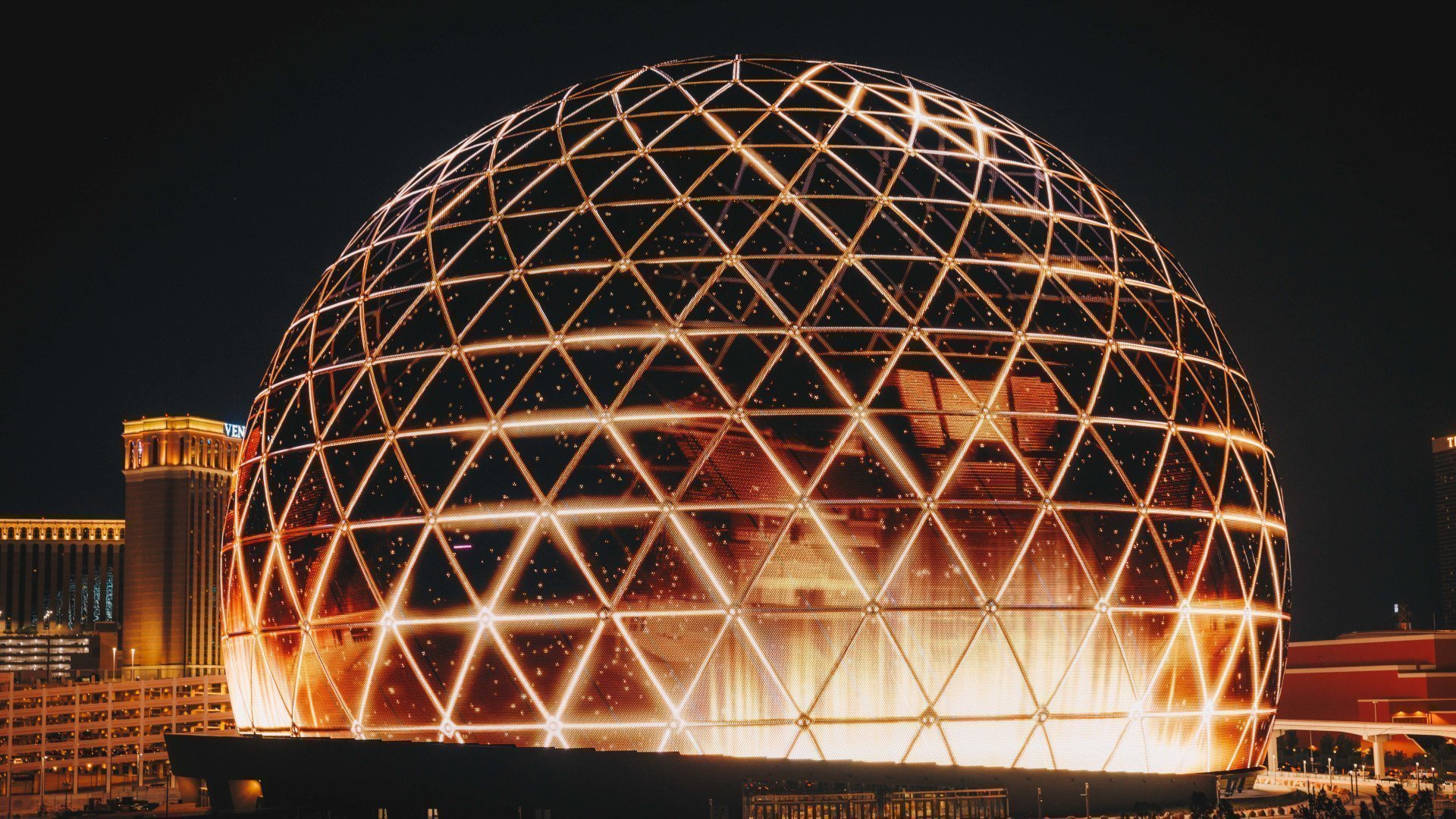The famous Octagon in front of the world's largest indoor LED: the UFC came to The Sphere for a never to be repeated event and pulled out all the audiovisual stops. Even the fighters' pulse was shown on the screen in real time.

Las Vegas: High-Tech Fight Night at The Sphere
In September, the UFC delivered a Fight Night like no other: For one night only, the Octagon was put in front of the world’s largest indoor screen inside the Sphere in Las Vegas. After ten months of pre-production, UFC 306: O’Malley vs. Dvalishvili ended up breaking several records, not only for the promoter but also for the venue: With $22 million in revenue, it was the highest-grossing UFC fight event and the highest-grossing single event at The Sphere.
The night wasn’t just about the fights – it was also planned as the second edition of Noche UFC, a format that celebrates Mexico’s figthting spirit on Mexican Independence Day. The UFC had invested $15 million into a six-hour long spectacle which included a six-part short film titled For Mexico, For All Time that was shown between fights on the 15,000-square-meter indoor LED screen. For the screenings, the UFC activated the Sphere’s Holoplot audio system and used 360-degree audio beams, likely powered by 300 mobile X1 matrix array speakers, along with the venue’s 1,600 permanent speakers.
Here is part 1 of For Mexico, For All Time:
And with the playground of technologies available in The Sphere, the UFC came up with a few more funky ideas:
- Haptic Seats: For the first time, the UFC and Sphere audio teams integrated force feedback into the seats, allowing fans to feel real-time vibrations corresponding to the blows, slams, and takedowns in the Octagon.
- Real-Time Heart Rate Monitoring: The fighters’ heart rates were tracked in real-time and displayed on the Sphere’s colossal 16K screen. This was made possible by Protecht’s sensor technology that was integrated into the fighters’ mouthguards.
- AI-Driven Statistics: UFC 306 showcased the debut of Combat IQ, an AI solution that tracked fighters’ punches and instantly converted the data into on-screen statistics.
- 48 cameras: 8 cameras were used to record and broadcast the fights on the screen, including high-speed cameras, RF cameras, a Fletcher Nucleus camera, a Navcam four-point cable camera and two Moviebird 45 Techno Crane systems. The UFC also used the TAIT camera system for the first time for wide-angle shots to show the visual environment of the Sphere.
- Octagon lighting: Instead of traditional lighting rigs, the UFC used the Sphere’s pass-through lighting: Silent House Productions developed this technology, which replaced typical truss setups with 80 lights positioned behind the LED screen.
- Audio streaming in four languages: Attendees were able to receive four audio streaming channels in Spanish and English via the Livevoice app, as well as Red Corner and Blue Corner commentary. It was the first time the UFC streamed an event live in Spanish for fans in the audience.
- Shure Digital Microphone Array Technology: Since microphones could not be placed above the Octagon, the UFC utilized this new technology under the camera platforms.
- Four broadcasts: From a single control room, they produced four different broadcasts for Australia, New Zealand, Canada and France.
- 6 mobile broadcast units: The UFC used six mobile units to produce the event. ESPN broadcast a native 1,080p production in the USA for the first time.
For the ultimate selfies, the UFC also set up Proto’s volumetric display boxes in the Sphere lobby. Here, the fighters of the hour and UFC President Dana White appeared as hologram-like avatars. And of course, the UFC also activated the nearly 54,000 square feet of outdoor LED before and during the six-hour Fight Night.
